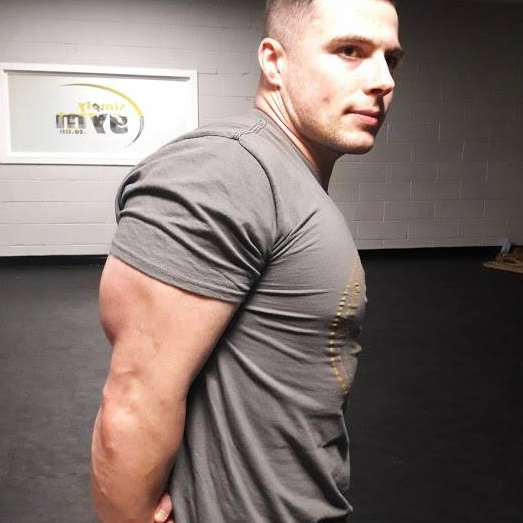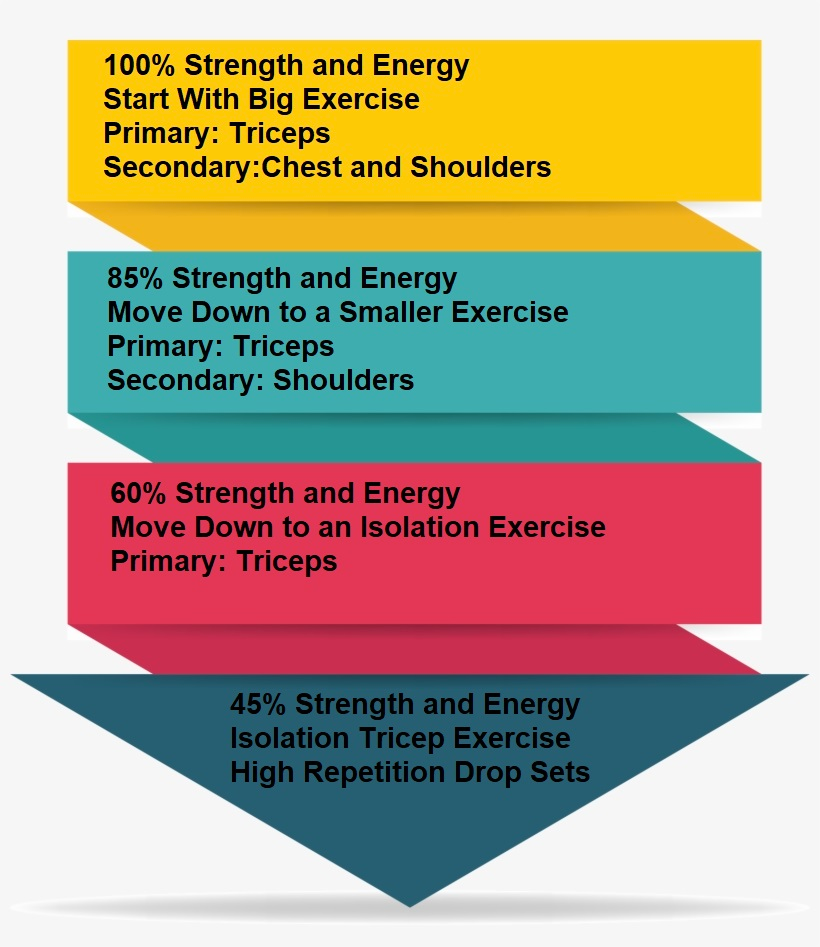How I Train Triceps
- Matt Gable

- Jan 3
- 3 min read
Updated: Jan 6
Training Technique

Each muscle group in my training style follows a specific strategy rather than sporadic exercises. Instead of randomly selecting movements, I design a structured plan to target muscles effectively. My focus is on prioritising energy levels and ensuring a logical progression throughout the session.
Starting a workout when energy levels are at their peak allows for optimal performance and intensity. At the beginning of my routine, I emphasise compound exercises, which engage multiple muscle groups simultaneously and require significant strength and energy. For example, when training legs, I often start with exercises like squats. Big compound movements serve as the foundation of your session, activating the most muscle fibres and preparing your body for the subsequent exercises.
After completing these high-demand compound movements, I shift to more isolated exercises, such as leg extensions or hamstring curls. These focus on specific muscles, allowing me to refine and enhance their development. Since isolating exercises are less demanding overall, they are perfect for maintaining intensity as energy levels begin to decline.
This strategic arrangement ensures a balanced intensity throughout the workout. Even as fatigue sets in, I make it a point to give 100% effort to every exercise, leaving no room for compromise. By prioritising energy and tailoring exercises to their appropriate place in the session, I can ensure consistent progress and balanced development across all muscle groups.
Tricep Exercise Examples
When it comes to triceps, the same principle applies. Structuring the session in a logical and energy-efficient way maximises results. Triceps, being a smaller muscle group, benefit significantly from a combination of compound and isolation movements. Below are examples of exercises I incorporate into a tricep-focused workout:

Close-Grip Bench Press
This compound movement is perfect for engaging all three heads of the triceps while also involving the chest and shoulders. As it demands maximum strength, I place it at the beginning of the session when my energy levels are highest.
Barbell Skull Crushers
A classic isolation exercise, skull crushers target the long head of the triceps, providing significant tension throughout the movement.
Rope Pushdowns
Rope pushdowns are great for isolating the lateral head of the triceps. Adjusting the rope at the bottom of the movement can enhance the contraction and provide a greater range of motion.
Single-Arm Dumbbell Kickbacks
This is an excellent finishing exercise for fine-tuning the triceps. Kickbacks are particularly effective for building definition and targeting each arm individually, addressing any imbalances.
Feel free to mix and match these exercises or include 2-5 movements based on your preference. The key is to stick to the technique of progressively managing energy levels and exercise intensity.

Sets and Reps
The progression of sets and reps is just as critical as the choice of exercises. Early in the workout, I focus on heavy weights and lower repetitions, typically in the range of 5-8 reps. This is where compound exercises like the close-grip bench press shine, as they allow for maximum strength output.
As the session progresses, I adjust the weight and increase the repetitions to 8-12, shifting the focus to hypertrophy. For example, barbell skull crushers or rope pushdowns are ideal for this range, as they provide sufficient tension to stimulate muscle growth without overly taxing the central nervous system.
Finally, I finish with a dynamic exercise such as single-arm dumbbell kickbacks or a dropset variation. A 3-set dropset involves starting with a heavier weight, performing as many reps as possible, and then decreasing the weight for the next set while maintaining intensity. This method ensures the muscle is completely fatigued, promoting both strength and endurance.
Let's Go
Always start with a proper warm-up to activate the triceps and prevent injury. Light pushdowns or arm circles are excellent options.
Feel free to experiment with this structure and adapt it to your fitness level and goals. Whether you're a beginner or experienced lifter, the principles of prioritising energy, targeting muscle groups efficiently, and maintaining consistent effort will set you on the path to achieving stronger and more defined triceps.
Feel free to share your thoughts, experiences, or favourite tricep exercises in the comments below!
Recommended Blogs



Comments